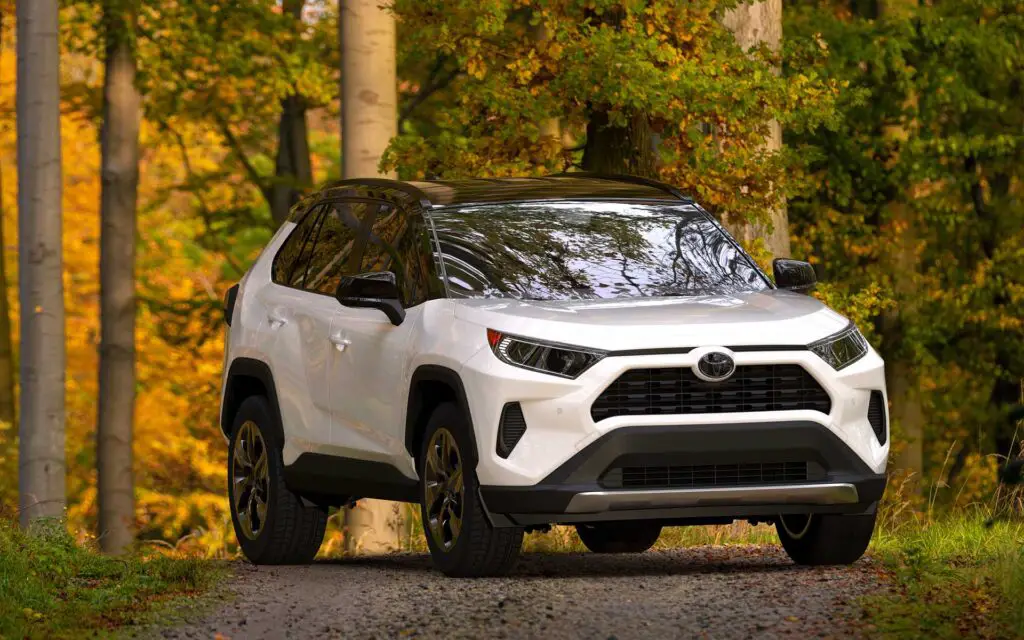Buckle up as I explore the Honda CR-V vs. Toyota RAV4 vs. Subaru Forester because these compact SUVs combine style, performance, and reliability. Not to mention their impressive features, advanced safety technologies, and spacious interiors. Whether you’re an adventure seeker, a daily commuter, or a family on the go, we’ve got you covered. Get ready to embark on a thrilling journey to find the SUV that suits your needs and sets your heart racing.
Why Have Japanese Automakers Captured the Hearts and Minds of Car Enthusiasts Worldwide?
The Japanese automotive industry, renowned for its innovation, precision engineering, and relentless pursuit of perfection, has left an indelible mark on the global stage. From the iconic efficiency of Toyota to the sleek sophistication of Honda and the adventurous spirit of Subaru, there’s no need to mention anything else.
However, with a unique blend of traditional craftsmanship and cutting-edge technology, they have consistently pushed the boundaries of automotive design, safety, and sustainability. In an industry known for its fierce competition, Japanese manufacturers stand tall as pioneers of groundbreaking technologies.
They are introducing hybrid and electric vehicles that have revolutionized how we drive. With a commitment to quality, reliability, and customer satisfaction, the Japanese automotive industry continues to shape the future of mobility. All while weaving dreams on wheels that inspire generations and redefine what it means to drive with passion.
What Do These Three Car Brands Have in Common?
Honda, Toyota, and Subaru, three prominent Japanese automakers, share several common traits contributing to their success and reputation in the industry. Here are a few key similarities:
- Reliability – All three brands are known for producing reliable vehicles that offer long-lasting performance. Honda, Toyota, and Subaru have built a reputation for creating cars that are dependable and require minimal maintenance, which has earned them the trust of millions of drivers worldwide.
- Quality – Each brand places a strong emphasis on manufacturing vehicles with high-quality materials and craftsmanship. Attention to detail and rigorous quality control processes ensure that Honda, Toyota, and Subaru vehicles deliver an exceptional driving experience and longevity.
- Safety – Safety is a top priority for these automakers. They have consistently invested in advanced safety technologies and earned high safety ratings across their vehicle lineups. From innovative driver-assistance features to robust structural designs, Honda, Toyota, and Subaru prioritize the well-being of their drivers and passengers.
- Innovation – Honda, Toyota, and Subaru have been at the forefront of automotive innovation, introducing groundbreaking technologies and advancements. Whether it’s Honda’s VTEC engines, Toyota’s hybrid systems, or Subaru’s symmetrical all-wheel drive, these brands continuously push the boundaries of engineering to enhance performance, fuel efficiency, and overall driving experience.
- Environmental consciousness – Environmental sustainability is a shared commitment among these automakers. They have actively pursued eco-friendly initiatives, such as developing hybrid and electric vehicle options, reducing emissions, and implementing efficient manufacturing processes. Honda, Toyota, and Subaru strive to minimize their environmental impact while providing greener mobility solutions.
Each brand has its unique characteristics and models. These commonalities reflect their dedication to excellence, customer satisfaction, and drive to shape the future of the automotive industry.

Honda CR-V vs. Toyota RAV4 vs. Subaru Forester – Let’s Go Over Some Basics
If you find yourself currently in the market for a vehicle of this nature, it could be for a variety of reasons. It could be your first venture into purchasing a brand-new car, or perhaps your family is expanding, necessitating more space. Alternatively, you might be seeking a compact SUV to accommodate weekend getaways or downsizing from a larger vehicle after many years.
Regardless of your unique circumstances, now that you’ve decided to proceed, selecting the finest small SUV in a highly competitive automotive segment can be overwhelming. But don’t worry! Here’s what you need to know about some of the best compact SUVs on the market:
Toyota RAV4
The 2023 Toyota RAV4 holds the distinction of being the category’s top-selling model. Renowned for its reliability and the rugged aesthetics of its current generation, it consistently captivates a vast number of buyers. With its extensive lineup, there is no shortage of options. While we requested all automakers to provide us with their top trim levels featuring a gas engine, Toyota was only able to offer us a TRD Off-Road model for our comparison. This variant stands out from the crowd with its adventure-ready appearance, elevated ride height, all-terrain tires, and eye-catching two-tone paint scheme.
Honda CR-V
The 2023 Honda CR-V has undergone a comprehensive redesign this year, introducing fresh technology and features. In a departure from previous models, Honda has opted to integrate gas and hybrid engines into a unified lineup for the 2023 model. Rather than separating the hybrid version into its trim hierarchy. As a result, the gas engine is available in the EX and EX-L trim. During testing, the EX-L model was proven to offer more than just the essentials but fell slightly behind its competitors in terms of overall equipment and features.
Subaru Foster
While the 2023 Subaru Forester may not boast the most striking aesthetics among SUVs, it remains a favored choice among nature enthusiasts. With its standard all-wheel drive and boxer engine, the Forester places emphasis on comfort, providing a serene and quiet ride while instilling confidence in all-weather conditions.
Who Won the Performance Battle?
To provide a comprehensive analysis, I will evaluate the Honda CR-V separately for its gas and hybrid powertrain options. The CR-V’s 1.5-liter turbocharged I4 generates 190 horsepower and 179 pound-feet of torque, placing it on par with its competitors. Notably, the Toyota RAV4 stands out as the only vehicle on the list to feature a traditional automatic transmission. While the remaining vehicles utilize a continuously variable transmission (CVT).
But let’s check the gas powertrain specifications and see for yourself which one will suit your driving needs the best.
| Model | Engine type | Torque (lb-ft) | Transmission type | Power (hp) |
| Toyota RAV4 | 2.5-liter I4 | 184 | 8AT | 203 |
| Subaru Forester | 2.5-liter H4 | 176 | CVT | 182 |
| Honda CR-V | 1.5-liter I4 | 179 | CVT | 190 |
Regrettably, among the competitors listed, Toyota stands alone in providing a hybrid variant. Subaru has yet to offer a hybrid version of the Forester. The CR-V Hybrid from Honda incorporates a clever two-motor hybrid setup, utilizing integrated electric motors and a wet clutch instead of traditional transmission.

Which One Is More Reliable – RAV4 vs. CR-V vs Forester?
When it comes to reliability, all three SUVs, the RAV4, CR-V, and Forester, have a reputation for being dependable vehicles. However, it’s important to note that reliability can vary based on factors such as driving stress and individual car maintenance.
In terms of driving stress, the RAV4 and CR-V have historically performed well under different driving conditions. The RAV4, known for its robust build quality and durability, excels in handling off-road terrains and challenging driving situations. On the other hand, the CR-V offers a smooth and comfortable ride, making it a popular choice for daily commuting and family-friendly driving.

Comparison of Exterior Specifications of These Three Compact SUVs
When selecting a car, exterior and interior specifications play a crucial role. The visual appeal and design of the exterior create a lasting impression, while the interior defines comfort and functionality. In the US, popular imported cars like these SUVs excel in delivering captivating exteriors and well-appointed interiors, satisfying the diverse preferences of American car enthusiasts.
This being said, let’s compare exterior specifications – Forester vs. RAV4 vs. CR-V in the table below.
| Model | Length (in.) | Height (in.) | Wheelbase (in.) | Width (in.) | Track (in., F/R) |
| Honda CR-V | 184.8 | 66.6 | 106.3 | 73.4 | 63.4 / 64.0 |
| Toyota RAV4 | 180.9 | 67.0 | 105.9 | 73.0 | 63.0 / 63.7 |
| Subaru Forester | 182.7 | 67.5 | 105.1 | 71.5 | 61.6 / 61.8 |
Are There Any Differences in the Interior and Overall Comfort?
As the industry advanced and the evolution of four-wheelers, manufacturers recognized the importance of creating a pleasant and ergonomic environment for drivers and passengers. Today, cars offer a wide range of features, from luxurious materials and ergonomic seating to advanced climate control systems and customizable settings. As the automotive landscape continues to evolve, interior and overall comfort have become paramount. Carmakers strive to provide a seamless and enjoyable driving experience for all occupants.
Comfort and a serene cabin remain top priorities for buyers in this segment. In the table below, you can see which of these three compact SUVs will provide the best comfort and help you overcome driving anxiety.
| Model | Rear legroom (in.) | Cargo volume, 2nd row down (cu. ft.) | Cargo volume, 2nd row up (cu. ft.) |
| Honda CR-V | 41.0 | 76.5 | 36.3 |
| Toyota RAV4 | 37.8 | 69.8 | 69.8 |
| Subaru Forester | 39.4 | 74.2 | 74.2 |
While these SUVs weren’t specifically designed for track performance or a sporty driving experience, the segment has made significant strides in that aspect. While some models offer a more enjoyable driving experience than others, I understand that it’s not the sole determining factor when purchasing an SUV.

In-Car Tech and Safety Features
In terms of in-car technology, the offerings vary among the models. The 2023 Honda CR-V includes a 7-inch touchscreen equipped with Apple CarPlay and Android Auto as standard. Higher trims boast a larger 9-inch display with wireless smartphone connectivity.
Subaru’s base radio features a 6.5-inch display, but to access the 8-inch display, you’ll need to opt for a few higher trims. Toyota follows a similar pattern, offering a standard 7-inch touchscreen and an upgraded 9-inch display on select higher trim levels.
Let’s talk about safety technology. The Honda CR-V sets a high standard by including a comprehensive suite of features. For example:
- lane-keeping aid,
- blind-spot monitoring,
- full-speed adaptive cruise control,
- traffic sign recognition,
- automatic emergency braking.
And the newly introduced Traffic Jam Assist that combines ACC and LKA at low speeds. While the Toyota RAV4 blind-spot monitoring is only available on higher trims, similar to Subaru’s lineup.

Explore the Price Ranges and Warranty Coverage Options
If you’re not looking for the most expensive vehicles in the world, then you’re at the right place. These compact SUVs have more than reasonable starting prices. That’s why the Honda CR-V’s starting price is around $33,500. Toyota RAV4 is $27,500, and Subaru Forester is $26,500. When it comes to basic warranty, all three models have the same coverage – three years or 36000 miles.

Embark On Countless Unforgettable Journeys With Your Chosen SUV Companion
The detailed comparison between the RAV4 vs. Forester vs. CR-V showcases the strengths and unique features of each SUV. Whether you prioritize reliability, versatility, or off-road capability, there is a suitable option among these popular models. However, it’s essential to remember that becoming a better driver goes beyond the vehicle itself. So, choose your fighter accordingly and be careful 100% on the road.








